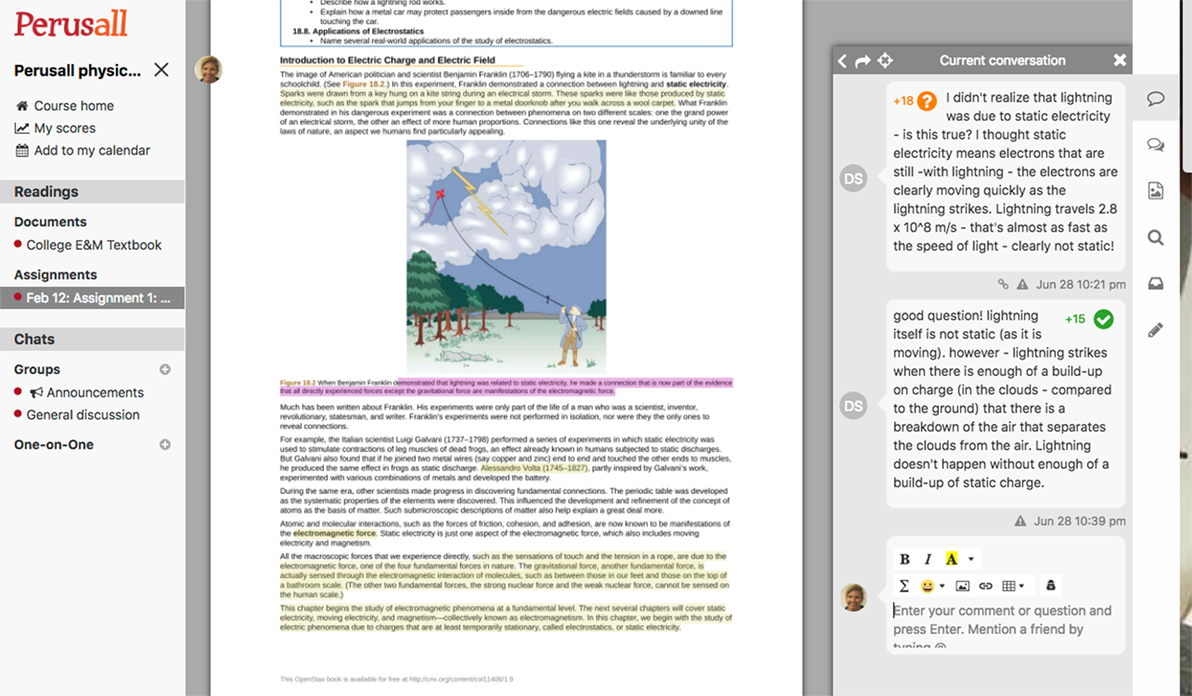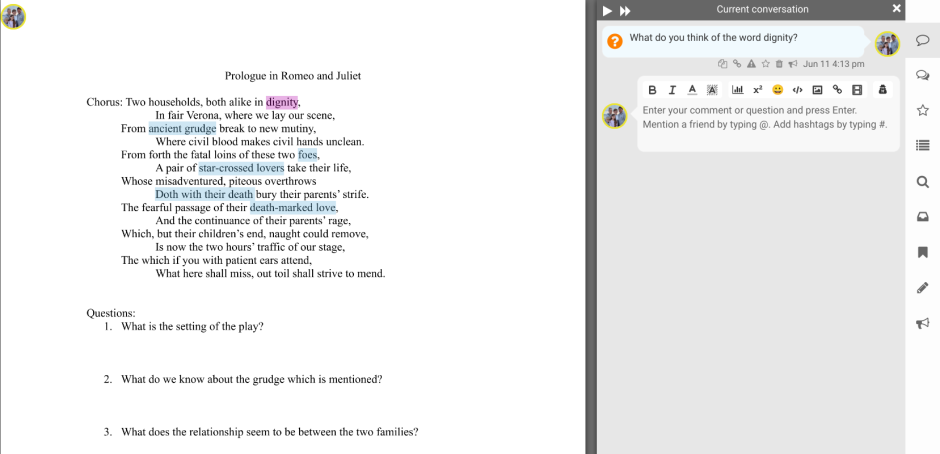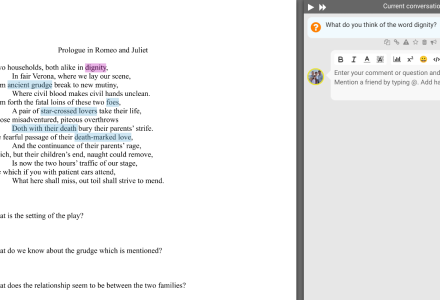Perusall has been bookmarked for a month. It has been a busy month.
So what is Persuall?
Developed at Harvard University, it is a more controlled, or evolved version of the flipped classroom. Think – intelligent discussion boards (and in the past I have been a heavy user of discussion boards). Where pre-class reading assignments are socially annotated by teachers and students in advance of lessons, although there is no reason why this can not be after as well. Note here that Perusall was designed for undergraduate courses.

How does it work
Teachers upload content / documents for the students to read and annotate collectively outside the classroom as reading assignments. Students are encouraged to highlight and annotate the document (text / images / video) and respond to each other’s annotations (comments or questions and responses) that’s the social part.
The overall functionalities of Perusall that promote peer learning make this environment potentially very useful, particularly with large classes and in the context of online education.
Cecchinato, Graziano and Foschi, Laura, (2020)
One key engagement activity is upvoting and there are two types of upvoting in Perusall. When students would like to know the answer to a question posed by another student, they can indicate this by clicking on the orange question mark. Of course, teachers can pay particular attention to the questions that have been upvoted by other students.
Second, when a student provides a particularly helpful explanation, other students can indicate this by upvoting their answer using the green checkmark.
Engagement insights are collected and reported. (With engagement given a grade that counts towards the final course mark.)
- Student confusion report summarises general areas of questions/confusion, helping teachers know what material to focus on in class.
- Student activity report shows various statistics about each student’s engagement with a particular assignment, allowing teachers to reach out and reengage with low activity students keeping the class on track.

So far, so good. I can really see Perusall breathing life into reading a class text, making the commitment and learning visible.
A few extra early observations.
- Larger cohorts are auto-grouped and I like this idea – thinking it could be used to encourage conversation across classes within a year cohort.
- Teacher can add focus points ahead of reading, either as questions or annotations (in blue).
- Copyrighted material can also be requested.
There is quite a bit of functionality I am not highlighting – I am not an expert and this is not a review.
Potential pitfalls to avoid
- Perusall could quickly increase and deepen student commitment, a commitment that either requires or deserves teacher engagement also. Maybe think ahead and assign student roles (lead learner). Set expectations for students to support one another.
- Use the confuse reports to maximise you impact as a teacher
- Use the Star feature to curate actions
Here is the Prologue from Romeo and Juliet set up for my pupils next week. I let you know how we get on.

Research with this platform has reported students spending an “above average” amount of time reading (compared to that reported in the literature) and that most students complete their reading assignments before class. They were able to demonstrate ways Perusall promoted active reading strategies that produced high-quality learning interactions between students outside class and that promote improved learning outcomes. Lastly and perhaps most interestingly, researchers were also able to identify specific reading behaviours that are predictive of in-class exam performance.
For example, “students who break up their reading into more sessions do better on in-class exams than students who read in fewer sessions, even when controlling for pre-course physics knowledge and the amount of time students spend reading.” They went as far as saying “with spaced repetition—that leads to better outcomes.”
Read more here.
I plan to report back at the end of term.
Miller, Kelly & Lukoff, Brian & King, Gary & Mazur, Eric. (2018). Use of a Social Annotation Platform for Pre-Class Reading Assignments in a Flipped Introductory Physics Class. Frontiers in Education. 3. 10.3389/feduc.2018.00008.
Cecchinato, Graziano & Foschi, Laura. (2020). Perusall: University learning-teaching innovation employing social annotation and machine learning. Qwerty. Open and Interdisciplinary Journal of Technology, Culture and Education. 15. 10.30557/QW000030.



